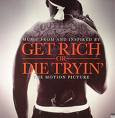NEW YORK (Fortune) -- If successful businesses share certain "best practices," do scam artists have their own favored techniques? The banker R. Allen Stanford, while accused of a smaller scheme than Bernie Madoff's, conducted his business in ways that make it appear they were using a similar playbook.
The U.S. Securities and Exchange Commission has accused Houston-based Stanford Financial Group of falsely promising steady returns to thousands of investors in $8 billion worth of investments sold as certificates of deposits (CDs). On Feb. 19, Federal Bureau of Investigation agents served Stanford with civil papers in Fredericksburg, Va. So far, criminal charges haven't been filed.
Details in the Stanford case are still emerging and many differences have already become clear. Stanford Financial isn't accused of running a Ponzi scheme, only of advertising unrealistic returns and investing in riskier, less-liquid instruments than advertised. Ironically, the SEC says that Stanford lost at least $400,000 with Madoff through feeder funds, all while assuring investors that the firm wasn't involved with Madoff.
But there are also some startling similarities. And what emerges looks like a formula on how to get mixed up in a massive government fraud case. The key elements:
Offer steady, good returns.
The returns reported by Madoff's firm of 10% to 12% year after year were so good that people practically begged him to take their money. Stanford Financial's numbers weren't too shabby, either. According to the SEC complaint, Stanford Investment Group hasn't failed to hit its targeted investment return of 10% since 1994. The returns on the so-called CDs ranged from 16.5% in 1993 to 11.5% in 2005.
Get yourself an obscure auditor.
Madoff used a three-person firm, Friehling & Horowitz, based out of a 13-by-18 foot storefront office in New City, New York, to check his books. The firm, which really only had one active accountant, told a key industry accounting group that it didn't audit. Neighbors of the office said only one person periodically visited the office, usually for a 10- to 15-minute stretch.
Similarly, Stanford used CAS Hewlett, which the SEC described as "a small local accounting firm" based in Antigua where "no one ever answered the phone" when the SEC called. Hewlett's CEO, according to the Financial Times, died in January and since then one of Hewlett's children who lives in Britain has been taking over the business.
Praise the regulators.
In December 2000, Madoff urged the SEC to remain robust. In an advisory committee meeting, he said it would make him feel "very uncomfortable" if the SEC were to relax its oversight. "The S.E.C. must," he said during a meeting of the agency's Advisory Committee on Market Information, "as they have always been, sort of been the overseer of everything that we do to keep us from injuring ourselves, as well as injuring the public."
Stanford followed suit in November 2007 at the Caribbean International Leadership Summit, saying the Caribbean needed to increase its enforcement to discourage rogue investors. "Individuals and corporations ... come to our debt-ridden, small-island nations desperate for foreign investment and in simple terms, rob them." He added: "The reality is that hardly any investor is properly vetted."
Spread the wealth.
Thousands of charities were invested in, or had donations from, Madoff and his firm, including Memorial Sloan Kettering Hospital and the Leukemia and Lymphoma Society. Madoff also gave to politicians including New York Sen. Charles Schumer and New Jersey Sen. Frank Lautenberg.
Stanford was no slouch with the giving, either. The financial group sponsors a golf tournament for St. Jude Children's Research Hospital and donated to museums in Houston and Miami. Stanford himself also donated to Barack Obama, John McCain and Florida Sen. Bill Nelson and Texas Rep. Pete Sessions. The politicians have said they'll donate the money to charity.
Hope your skeptics are ignored.
Watch out for any nosy investigators who might try to tip off regulators. Hedge-fund researcher Harry Markopolos, to name just one example, had been warning the SEC since 2000 that Madoff was up to something.
And while the Stanford scandal is still unraveling, an early tipster has emerged: Independent analyst Alex Dalmady questioned Stanford's returns in a piece he penned for a Venezuelan economic publication and first floated the idea of fraud. In his article, he wrote: "The bank's deposits have grown from $624 million in 1999 to over $8.4 billion at year-end 2008. That's an average compound growth rate of 34%! Now, that [emphasis his] is unusual. Very aggressive deposit growth is usually a 'red flag' for banks. It's difficult to invest such a deluge of money efficiently. It also indicates that something may be 'too attractive.'"
-




No comments:
Post a Comment